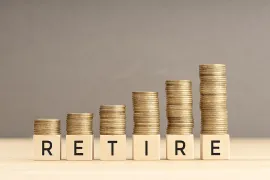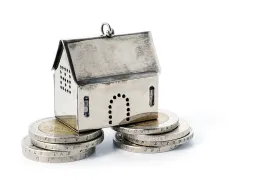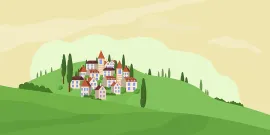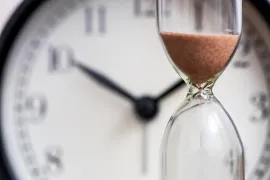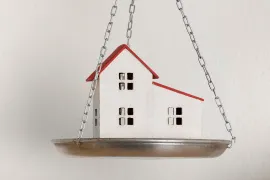Pensions and cash from a cottage sale put this Ontario couple's retirement on solid ground
They will far exceed their goals and expectations,' expert says

Cindy and Allyson's goal is a secure retirement starting in three years when they are 63 and 55, respectively.
In Ontario, two women we’ll call Cindy, 60, and Allyson, 52, have made a life together for nearly three decades. Cindy is unemployed. Allyson brings home $5,718 after tax per month from her job in health care. Their goal — retirement in a few years, depending on having sufficient savings and pensions to support a fairly modest way of life. Backing up their plans are investments, a cottage they want to sell one day and defined-benefit pensions from two careers.
In Ontario, two women we’ll call Cindy, 60, and Allyson, 52, have made a life together for nearly three decades. Cindy is unemployed. Allyson brings home $5,718 after tax per month from her job in health care. Their goal — retirement in a few years, depending on having sufficient savings and pensions to support a fairly modest way of life. Backing up their plans are investments, a cottage they want to sell one day and defined-benefit pensions from two careers.
Family Finance asked Derek Moran, head of Smarter Financial Planning Ltd. in Kelowna, B.C., to work with Cindy and Allyson.
Income and assets
The women have substantial assets. Their home is worth $550,000. A cottage that they are willing to sell could bring $300,000. Their RRSPs total $548,000, their TFSAs add up to $133,000 and they have $208,000 in cash. The total, $1,739,000 on top of pensions, should enable their retirement plans to provide their target income.Cindy expects $13,140 per year from CPP, Allyson $14,016 from CPP, both figures based on age 65. OAS will pay each $7,623 per year at 65.
Their TFSAs currently total $133,000. They should use $50,000 cash in savings to fill unused room and raise balances to $183,000 total. Then, if they add $6,000 each per year and the money grows for three years to Cindy’s retirement using three per cent growth per year after inflation, it will become $238,172 in 2021 dollars. That sum would support payments of $10,762 per year for 35 years to Allyson’s age 90.
The couple’s RRSPs total $548,000. Cindy will add $27,000 from cash to fill her room for a total of $575,000. That sum growing for three years to $628,320 and annuitized at three per cent after inflation over the following 35 years to Allyson’s age 90 would support taxable payouts of $28,400 per year.
They have $208,000 in cash. Taking out $50,000 for TFSAs, $27,000 for Cindy’s RRSP, and $70,000 for improvements to their cottage, they would have $61,000 left. If this sum grows at three per cent per year after inflation to $68,660 and is then annuitized for 35 years, it would support payouts of $3,012 per year for 35 years beginning in three years.
If the women sell their cottage for which they paid $86,000, in a decade, as they plan, they can price it at $300,000 plus $70,000 of improvements, total $370,000. Their gain would be about $170,000 to allow for some inflation. The net gain would be $200,000 or $100,000 for each partner. Half the gain under current tax law would be taxable. Each partner would have $50,000 of tax liability. Tax would be about $30,000 combined. After tax and legal fees, their proceeds would be about $320,000.
If that amount is invested at three per cent after inflation starting in 10 years when the women have chosen to sell it, it will provide $17,842 per year for 25 years.
Three stages of retirement
Moran sees the women’s retirement in three stages. First, the two years from when Allyson is 55 to Cindy’s age 65; second, the eight years from Allyson’s age 57 to age 65, a stretch when only Cindy is receiving CPP and OAS; and third, from the time Allyson is 65 and the cottage is sold and her CPP and OAS have started.In stage 1, the couple has combined defined-benefit pension income of $74,500 including two bridges; two RRSP incomes totalling $28,400; combined TFSA income of $10,762; and $3,012 in taxable income. That adds up to $116,674 before tax. After splits of eligible income and 16 per cent tax on all but TFSA cash flow, they would have $8,310 per month to spend with TFSA cash flow restored.
In stage 2, the women would have $60,516 in pensions; $5,000 in bridges; Cindy’s $14,016 CPP and her $7,623 OAS; two RRSP incomes totaling $28,400; TFSA cash flow of $10,762; and $3,012 taxable income. That’s a total of $129,329, which after 18 per cent tax on all but TFSA cash flow would leave $9,000 per month.
In stage 3, their incomes would consist of $60,516 in DB pensions; CPP benefits of $14,016 and $13,040; two OAS benefits totalling $15,246; $28,400 RRSP payouts; $10,762 from TFSAs; $3,012 taxable income; and $17,842 from the sale of the cottage. That adds up to $162,834 before tax. After splits, no tax on TFSA cash flow and 20 per cent tax they would have $11,035 with TFSA cash-flow restored to spend each month.
In each case, income splits would have avoided the OAS clawback which is indexed and starts at $79,845 in 2021.
Income above present spending
These income estimates are above present spending excluding savings of $3,445 per month. The increases are the result of defined-benefit pensions coming on stream, annuitized income from sale of their cottage, annuitized investment incomes in TFSAs and RRSPs and other investment flows. “They will far exceed their goals and expectations,” Moran says. “Their income will be an opportunity for good deeds. How they accommodate their opportunities will be a measure of their success in planning. I think they will do well in retirement.”Retirement stars: Five retirement stars ***** out of Five
Financial Post
( C) 2021 The Financial Post, Used by Permission


